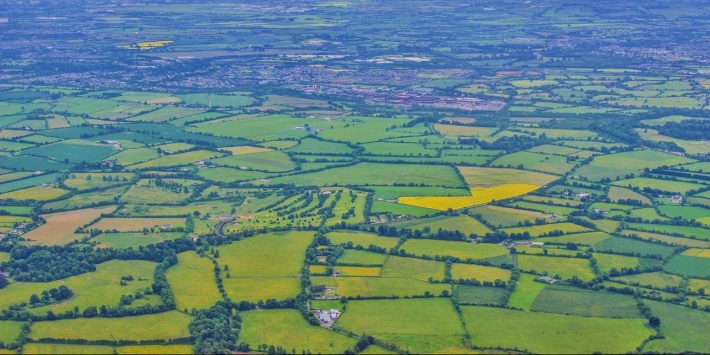Smaller fields and diversified crops can help spontaneous plants to make a comeback, even in the middle of fields
INRAE press release.
Scientists from INRAE and the CNRS, working with colleagues from Germany, Spain, the UK and Canada, find that increasing field border lengths could be a highly effective measure to complement agri-environmental schemes, maintaining and restoring plant diversity right to the centre of fields. The research is published in the Journal of Applied Ecology.

Farmland now contains fewer species of spontaneous plants than even thirty years ago and they have also sharply declined in number. Often considered a nuisance by farmers, spontaneous plants in fields (more commonly known as weeds), act as an essential link in the biodiversity network, offering food and shelter to many different animals such as pollinators, birds and insects that assist crop growth.
One way to reduce the decline of these plants is to increase the proportion of semi-natural elements in the landscape (such as hedgerows and grassy strips). But this also reduces the area available for agricultural production and requires changes in both practice and perceptions that are sometimes not easy for farmers to make. A research team has therefore been looking for alternative levers, with a particular focus on heterogeneity in the crop mosaic, whether this takes the form of crop diversity, more field borders, or both.
As part of the European FarmLand project involving 30 laboratories across Europe and Canada, researchers compared plant diversity levels in 1,451 1km2 farmed study sites, across 432 different agricultural landscapes, where the total length of field borders, crop diversity and the proportion of semi-natural elements were independently variable. A total of 899 plant species were identified.
The researchers demonstrated that longer field borders in agricultural landscapes enhance spontaneous plant diversity in the study sites, including those with no semi-natural features between the fields. This positive effect was even more noticeable at the centres of the fields, where the number of spontaneous plants is usually lower than at the edges. The team also showed that longer field borders and crop diversity have different and complementary roles to play. For example, increasing the former leads to greater plant diversity on grassland, while increasing the latter leads to a greater diversity of plants in crops.
This suggests that altering field shapes to increase field border lengths in agricultural landscapes and increasing crop diversity would support high plant diversity right to the centre of the fields and would thereby generate a range of associated ecosystem services. In addition, other studies have shown that there is no significant reduction in yields for smaller fields. These measures might thus constitute a substantial (and much underexploited) lever to support both biodiversity and yields in farmland.
You can the paper here:
, , , et al. Configurational crop heterogeneity increases within‐field plant diversity. J Appl Ecol. 2020; 00: 1– 10. https://doi.org/10.1111/1365-2664.13585
Like what we stand for?
Support our mission and help develop the next generation of ecologists by donating to the British Ecological Society.